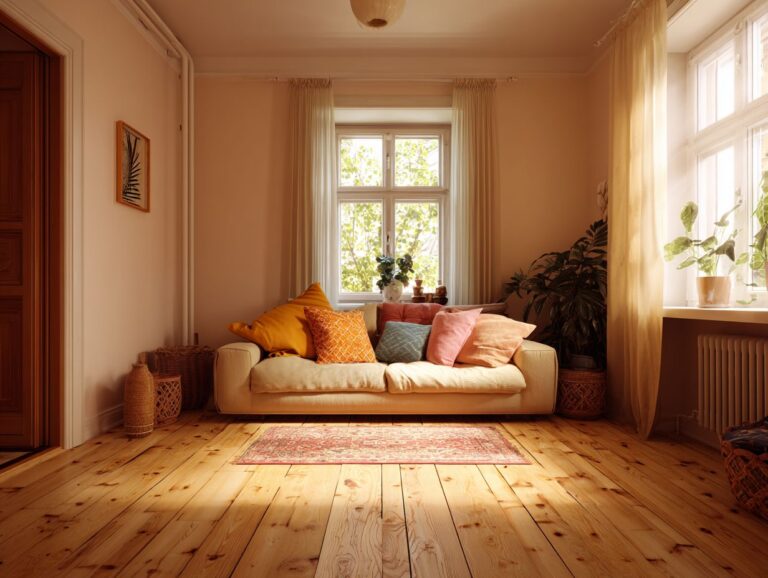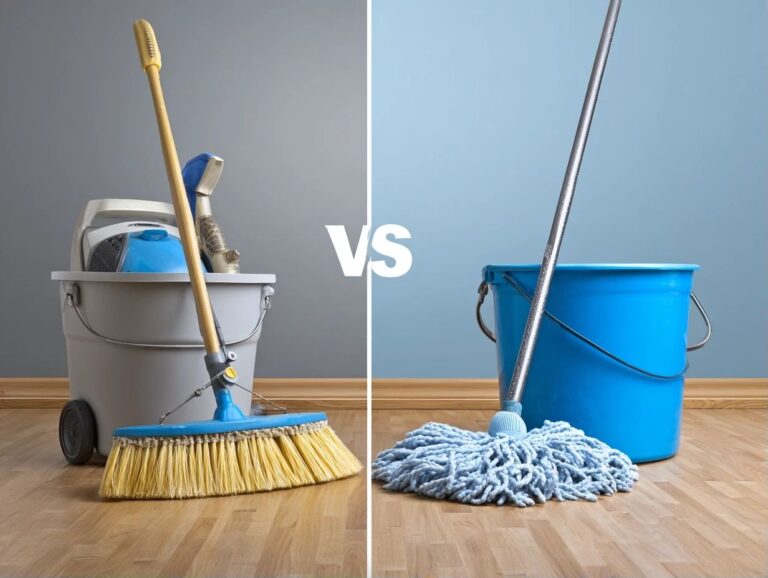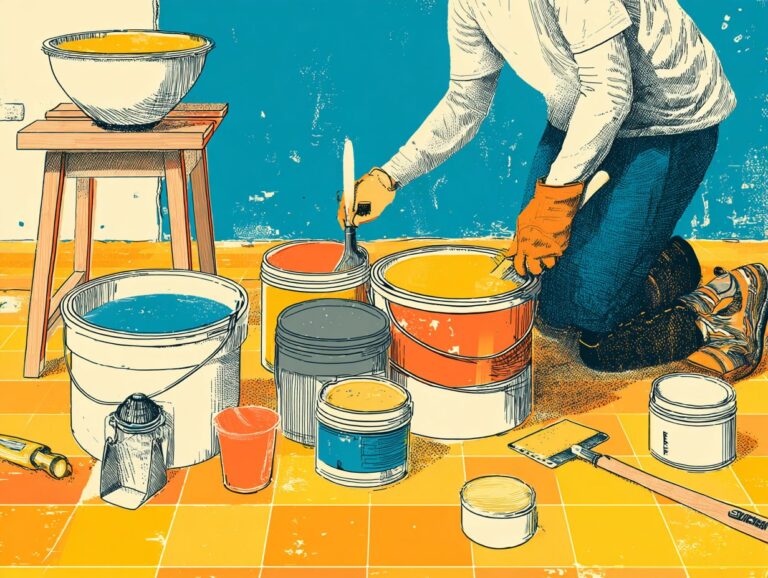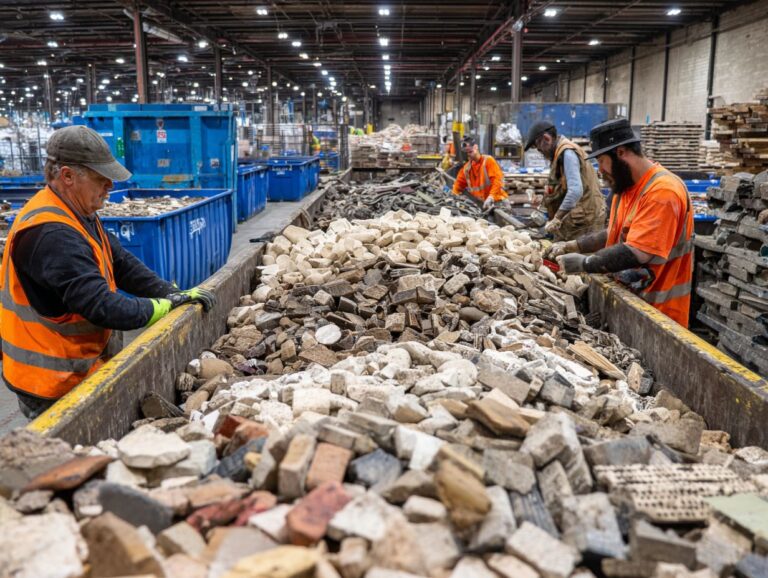Understanding Flooring Janka Hardness Ratings
Picking the right hardwood flooring can be confusing, but knowing Janka hardness ratings makes it much easier. The Janka Hardness Scale measures the durability of various wood species, including Hickory and American Chestnut, helping you make informed decisions. In this article, we’ll break down how Janka ratings work, their importance in flooring, and what they reveal about your options, ensuring you select the perfect floor for your home.
Key Takeaways:
Contents
- Understanding the Janka Test
- Janka Hardness Ratings Scale
- Janka Hardness Scale Data
- Factors Influencing Janka Ratings
- Comparing Different Flooring Options
- Practical Applications of Janka Ratings
- Limitations of Janka Hardness Ratings
- Frequently Asked Questions
- What are Janka hardness ratings for flooring?
- Why are Janka hardness ratings important for flooring?
- How are Janka hardness ratings determined?
- What are the different ratings for Janka hardness ratings?
- Does a higher Janka hardness rating mean better quality flooring?
- Are there any downsides to choosing a flooring with a high Janka hardness rating?
What is Janka Hardness?
The Janka Hardness test measures the resistance of wood to wear and denting, quantified in pounds-force, establishing a standard for flooring durability.
This test is important for comparing types of wood, helping users check how long they might last.
Measured by embedding a 0.444-inch steel ball into the wood, the force required for this action determines the hardness rating. For example, oak typically scores around 1,300 psi, while harder species like hickory may exceed 1,800 psi.
Choosing a hardwood by looking at Janka ratings helps confirm that the flooring can handle daily use, which is an important factor when choosing floors.
Importance of Janka Ratings in Flooring
Knowing Janka ratings helps homeowners and builders choose the appropriate hardwood types for particular uses, improving floor strength and visual attractiveness.
For high-traffic areas like hallways or living rooms, choose hardwood with a Janka rating above 1,500, such as oak or hickory, which can withstand heavy use without significant wear.
Conversely, for low-traffic spaces, such as bedrooms, softer woods like pine (with a Janka rating of around 690) can provide a warmer, cozy atmosphere.
Consider environmental factors like humidity; some species expand and contract more with moisture, potentially affecting longevity. Thus, aligning the wood choice with the expected use greatly benefits durability and appearance.
Understanding the Janka Test
The Janka test is a well-known method that measures how hard wood is, giving a dependable way to assess different types of hardwood. For a comprehensive comparison, check out our analysis of engineered vs solid hardwood to understand their respective advantages and limitations.
History and Development of the Janka Test
Developed in the early 1900s by Gabriel Janka, the Janka hardness test was standardized by the Forest Products Lab to assess wood durability across species.
Over the decades, this test has evolved in its methodology and reputation. At first, it tested how easily wood got marked by pressing a steel ball into it, but now there are better methods to measure this.
The Forest Products Lab developed consistent testing methods to make sure testing is the same for various kinds of wood. Today, the Janka test results are important for both buyers and makers, as they help choose the right flooring materials.
Groups such as the National Wood Flooring Association regularly share full Janka ratings, which help buyers make informed decisions.
How the Janka Test is Conducted
The Janka test measures the force needed to press a steel ball into wood, expressed in pounds-force.
- To perform the Janka test, you need a standardized sample, typically sized 2 inches by 2 inches by 6 inches.
- Start by getting the wood surface ready for finishing. Sand it with 120-grit paper and check that it has no blemishes.
- Use a Janka hardness tester, which applies a specific force to a steel ball until it embeds halfway into the sample. Record the force applied in pounds-force.
- Look at various parts of the wood multiple times to confirm the results are accurate and reliable.
Interpreting Janka Test Results
Interpreting Janka test results means knowing what the hardness scores indicate. These scores can range from less than 500 to over 3000 lbs-force.
A Janka hardness score informs you about a wood species’ durability and suitability for flooring. Scores below 1000 indicate softer woods like Pine, which, while charming, are prone to dents and scratches.
Wood with medium hardness, scoring between 1000 and 1500, includes types like Red Oak and is suitable for homes. High hardness scores, exceeding 2000, are characteristic of species such as Brazilian Cherry or Hickory, ideal for high-traffic areas.
When selecting flooring, consider both your lifestyle and the expected wear to choose the right wood for your needs.
Janka Hardness Ratings Scale
The Janka hardness scale rates wood types from soft to very hard, giving buyers important details to choose suitable flooring materials.
Janka Hardness Scale Data
Janka Hardness Scale Data
Janka Hardness Comparisons: Hardwood Examples
Janka Hardness Comparisons: Top Hardwoods
The Janka Hardness Scale is an important test to check how long wood lasts and how strong it is, commonly used in making floors, furniture, and buildings. This data set provides a comparison of various woods based on their hardness, highlighting both popular hardwoods and the top-performing species in terms of hardness.
Janka Hardness Comparisons give information about various wood types Among the hardwood examples, White Oak stands at a hardness rating of 1350 This makes it a popular option for flooring because it is both hard and easy to work with. In contrast, Lignum Vitae, known for its extreme density, has a hardness of 4390 This makes it ideal for tough tasks where long-lasting strength is essential. On the softer end, Basswood scores 410, often used for carving and decorative applications due to its ease of workability.
- In the Top Hardwoods category, the Australian Buloke leads with an impressive hardness of 5060, renowned for its exceptional strength and often used in applications that demand high resistance to wear and tear. Schinopsis Brasiliensis follows with a hardness rating of 4800, and Schinopsis Balansae at 4570, both representing species that are ideal for heavy-duty and high-traffic environments.
This data illustrates that while softer woods like Basswood are suitable for specific applications that require ease of modification, harder woods like Lignum Vitae and Australian Buloke are essential for environments demanding durability and longevity. Knowing these hardness ratings helps consumers, designers, and builders choose the right wood type for their specific use and environmental needs.
Low Hardness Ratings
Wood species with low hardness ratings, typically below 1000 lbs-force, such as Pine and Cedar, are best suited for low-traffic areas and decorative applications.
Pine, with its light color and attractive grain patterns, makes an excellent choice for rustic interiors and furniture. It requires regular maintenance, such as periodic re-staining to maintain its appearance.
Cedar has a pleasant smell and doesn’t rot easily, which makes it great for outdoor use such as decks or garden furniture.
Both species work well in homes where furniture is frequently rearranged, as their softer surfaces are less prone to cracking. In the end, choose these woods for their look rather than how long they last.
Medium Hardness Ratings
Medium hardness ratings, ranging from 1000 to 1800 lbs-force, feature woods like Red Oak and American Walnut, striking a balance between durability and aesthetic appeal.
These woods are durable and have an appealing appearance, making them suitable for home floors. Red Oak is very stable and can handle a lot of use, which makes it perfect for living rooms and hallways.
In contrast, American Walnut has a rich, dark grain that adds a touch of sophistication, ideal for dining rooms. Both require minimal maintenance-regular sweeping and occasional refinishing-but it’s important to use pH-balanced cleaners to preserve their natural beauty and resilience.
High Hardness Ratings
Wood types like Hickory and Brazilian Cherry have hardness ratings over 1800 lbs-force, making them good choices for high-traffic areas and commercial spaces.
These woods excel in durability and wear resistance, ensuring they withstand heavy use over time.
Make sure your subfloor is flat and dry before installation to avoid problems later. Consider applying a top-notch polyurethane finish to highlight the natural beauty of the wood and make it last longer.
Although Hickory might cost about $5-8 for each square foot, Brazilian Cherry can cost between $8-12 per square foot, depending on where it’s sourced and its quality. Planning your budget is an important part of your project.
Factors Influencing Janka Ratings
Various elements can affect Janka hardness scores, such as the type of wood, the conditions it is exposed to, and how the wood is processed.
Wood Species and Variability
Different wood species exhibit significant variability in hardness ratings, even within the same species due to factors like growth conditions and age.
For example, oak typically scores between 1,290 and 1,400 on the Janka hardness scale, influenced by its age and growth environment, while cherry may range from 950 to 1,200.
Knowing these differences is important when choosing flooring; a softer wood like pine (690) can dent easily in areas with a lot of foot traffic, while a harder option like hickory (1,820) lasts longer.
Always consider the intended use of the flooring and the likelihood of wear and tear to make an informed choice.
Environmental Impact on Hardness
Environmental factors such as humidity, temperature, and exposure to elements can significantly impact the hardness and stability of wood over time.
For instance, prolonged exposure to high humidity can cause wood to swell, leading to warping and a decrease in hardness. Conversely, excessive heat can dry out the wood, resulting in cracks and increased brittleness.
If untreated wood is left out in the rain, it can lose its ability to resist moisture, leading to more decay and pest problems.
To make it last longer, use sealants or finishes that guard against moisture and temperature changes.
Comparing Different Flooring Options
When thinking about flooring choices, knowing how hardwood, engineered wood, laminate, and tile differ is important to choose wisely. For an extensive analysis of flooring options in specific settings, our RV and Camper Flooring Replacement Guide explores unique considerations and materials that can also apply to home environments.
Hardwood Flooring vs. Engineered Wood
Hardwood flooring typically offers superior durability and aesthetic appeal compared to engineered wood, which may provide more flexibility in application.
When choosing between the two, consider stability and use. Hardwood, with Janka ratings typically exceeding 1,200, resists dents and is suitable for high-traffic areas.
Engineered wood, which has a rating of 1,000 to 1,300, tends to expand and contract less with moisture, making it suitable for basements.
Installation techniques differ too; hardwood often requires nail-down methods, while engineered wood can be glued or floated, allowing for easier DIY projects.
In the end, you should pick what matches the needs of your area and how you live.
Laminate Flooring and its Hardness Ratings
Laminate flooring is a cost-effective choice that comes in various strengths, making it practical for many uses. However, it generally doesn’t last as long as hardwood.
Typically rated on the AC scale, laminate flooring ranges from AC1 (light residential use) to AC5 (heavy commercial use). For instance, an AC3 rating is ideal for family homes, handling moderate foot traffic while providing resistance to scratches.
In contrast, hardwood flooring, while more aesthetically appealing, is susceptible to dents and water damage. Engineered wood, a middle ground, maintains a wooden top layer with a sturdy core, offering better moisture resistance than solid wood but still less durability compared to high-quality laminates.
In the end, choose something that is both strong and matches your taste.
Tile and Vinyl Flooring Comparisons
Tile and vinyl flooring are very strong and resistant to water, which makes them different from regular hardwood flooring.
Tile flooring is almost completely waterproof, so it’s a good choice for bathrooms and kitchens where spills happen often.
Vinyl flooring also resists moisture, but it’s generally softer underfoot, providing more comfort in living spaces.
In contrast, hardwood floors require careful installation to avoid warping and are best suited for dry areas.
Laminate, while similar in appearance to hardwood, offers better moisture resistance but may not have the same longevity.
When choosing, think about the room and how much people will walk on it to pick the right flooring type.
Practical Applications of Janka Ratings
Janka ratings are important for practical use, helping people choose flooring for homes and businesses based on how strong and long-lasting the material needs to be.
Choosing Flooring for High-Traffic Areas
In areas where many people walk, opt for hardwoods like Hickory or Brazilian Cherry. These have a Janka rating above 2000 lbs-force, which means they are durable and long-lasting.
Along with high Janka ratings, consider the finish and maintenance of your flooring. A strong, shiny coating can help protect against scuffs and scratches.
Products like Bona Traffic HD provide a strong finish suitable for homes with a lot of activity. Cleaning and refinishing every few years can make the floor last longer.
Using area rugs or mats in entryways and high-traffic zones can also mitigate wear, keeping your flooring looking new longer.
Flooring for Homes with Pets
Homes with pets need floors that can withstand scratches and dents, so strong materials are necessary to keep them looking good.
When choosing flooring that works well with pets, look at options like oak or hickory. These materials are strong and handle moisture well.
The Janka hardness rating is important; choose at least 1,200 to make sure it resists wear and tear. Products with finishes like polyurethane can make them more resistant to scratches. For extra protection, consider applying area rugs in high-traffic zones.
Consider options like luxury vinyl planks, which are water-resistant and mimic the appearance of wood without its weaknesses.
Considerations for Commercial Spaces
When choosing flooring for commercial spaces, the Janka rating is critical, with a preference for woods such as Maple or Oak that can withstand heavy foot traffic.
Consider durability and maintenance requirements specific to your business type. For example, restaurants may benefit from finishes that resist stains, while retail spaces might prioritize scratch resistance.
Regular maintenance such as waxing or refinishing can extend the lifespan of your floors; using a high-quality floor cleaner designed for wood is essential. Tools like the Bona Professional Series or Mohawk’s floor care products can help maintain the finish while ensuring safety for both employees and customers.
Assessing your specific needs based on foot traffic and usage will guide your final choice.
Limitations of Janka Hardness Ratings
Janka ratings can be useful, but knowing their limitations helps when choosing strong and lasting flooring.
Other Factors Affecting Flooring Durability
Factors such as wood treatment, humidity levels, and exposure conditions also play significant roles in overall flooring durability beyond Janka ratings.
For example, treating wood with oil or sealer can greatly extend the life of a floor, providing protection from moisture and wear.
High humidity can cause bending, so it’s important to keep indoor humidity between 30-50%. Exposure to sunlight can also fade and weaken wood, so utilizing UV-resistant finishes can help mitigate damage.
When planning for durability, consider both the inherent qualities of the wood and the environmental conditions it will face.
Common Misconceptions about Janka Ratings
Common misconceptions about Janka ratings can lead to poor flooring choices, such as assuming that a higher rating always equates to better performance in all environments.
In reality, Janka ratings measure wood’s resistance to denting and wear, but they don’t account for other critical factors. For instance, species like oak (with a Janka rating of 1,300) may perform well in dense traffic areas, while softer woods, like pine (with a rating of 600), can suffice in low-traffic homes.
Environmental conditions such as humidity and temperature fluctuations can affect wood durability. When deciding on flooring, think about how you will use it-select wood by looking at Janka ratings, appearance, upkeep needs, and environmental aspects.
Frequently Asked Questions
What are Janka hardness ratings for flooring?
Janka hardness ratings are a measurement of the hardness or durability of different types of wood used for flooring. It measures the force required to embed a.444 inch diameter steel ball into the wood to half its diameter.
Why are Janka hardness ratings important for flooring?
Janka hardness ratings are important because they help determine the durability and resistance of flooring against impact, wear, and tear. This information can help you choose the best type of flooring for your specific needs and preferences.
How are Janka hardness ratings determined?
Janka hardness ratings are determined by a standardized test where a steel ball is pressed into the wood until it reaches half of its diameter. The force required to do this is measured and the resulting number is the Janka hardness rating.
What are the different ratings for Janka hardness ratings?
The Janka hardness ratings range from 0-4000, with 0 being the softest and 4000 being the hardest. The majority of flooring options fall within the range of 500-3000, with the most common ratings falling between 1000-2000.
Does a higher Janka hardness rating mean better quality flooring?
Not necessarily. While a higher Janka hardness rating can indicate a stronger and more durable flooring option, it is important to consider other factors such as moisture resistance, scratch resistance, and maintenance needs when choosing the best flooring for your specific needs.
Are there any downsides to choosing a flooring with a high Janka hardness rating?
One potential downside to choosing a flooring with a high Janka hardness rating is that it may be more difficult to install and may require specialized tools and techniques. It may also be more expensive compared to other flooring options with lower ratings.




